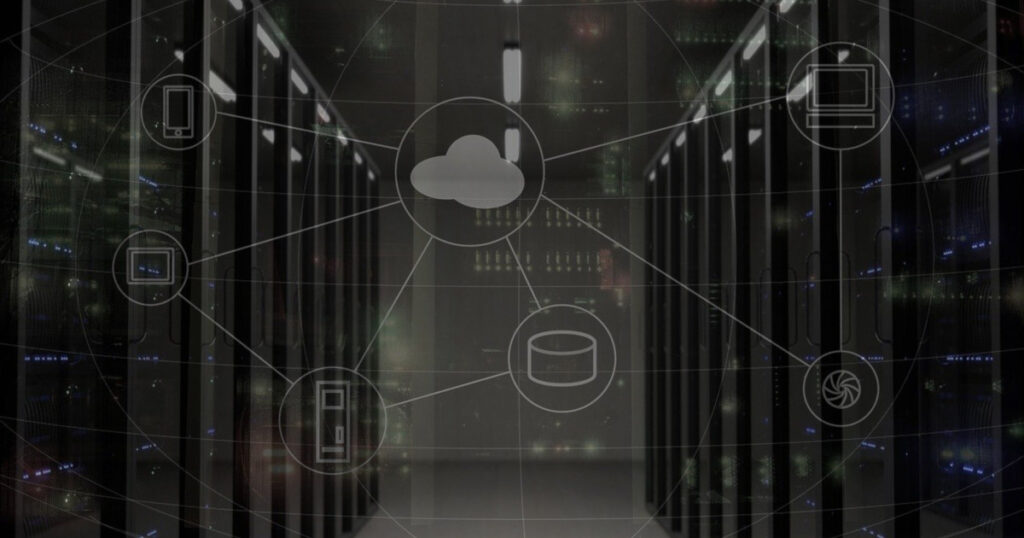Colocation hosting, in its essence, refers to the practice of placing privately owned servers and hardware in a third party data center commonly known as a colocation center. These centers are equipped with efficient infrastructure that guarantees reliable power supply, effective cooling systems and seamless connectivity. As a result, businesses can leverage the benefits of high quality data centers without the need to undertake the costs and responsibilities associated with constructing and managing their own facilities.
Since colocation is a broad topic and many of our customers ask very specific questions, we decided to put together this resource page for everyone to learn more about colocation. This guide will help explore the realm of colocation services and uncover how they might just be the solution your business has been searching for.
Book a demo today to see GlobalDots is action.
Optimize cloud costs, control spend, and automate for deeper insights and efficiency.

Chapter 1: What is Colocation?
Colocation services (also known as “colo”) offer a secure environment for hardware and access to network connectivity that enables reaching customers worldwide. Typically, a colocation service provides the building, cooling, power, bandwidth and physical security while the customer provides servers. Capacities in the facility are leased by the rack, cabinet, cage or room.
A colocation centre (also spelled co-location, or colo) or “carrier hotel”, is a type of data centre where equipment, space, and bandwidth are available for rental to retail customers.
Colocation facilities provide space, power, cooling, and physical security for the server, storage, and networking equipment of other firms and also connect them to a variety of telecommunications and network service providers with a minimum of cost and complexity.
Instead of keeping servers in-house or in a private data centre, businesses can rent physical space for their servers or computing hardware and colocate in a third-party data centre. The data centre provider takes care of the important aspects such as network connectivity, power and cooling.
With colocation services, businesses purchase their own equipment and pay a colocation provider for the space and resources in the data centre. The individual is then responsible for setting up and configuring their server and maintaining it going forward.
In order to establish a colocation hosting arrangement, the customer must have their own physical server – one that they own. The customer isn’t renting a server from the hosting provider; rather, they are merely leasing space like they would at a rental storage company. The customer physically transports the server to the colocation hosting provider’s place of business, typically a data center. The customer only rents space within the data center or colocation site, but maintains ownership and control of all hardware and software settings for that server. By communicating with the colocation hosting provider’s team, the customer can quickly upgrade or downgrade features like bandwidth and rackspace to fit the business needs.
Many businesses choose to move away from hosting their IT infrastructure in-house and want the flexibility of still being able to manage their own equipment. Space is rented based on their requirements but can be easily scaled up as the business grows.

Chapter 2: Colocation Center
Colo data centers are no longer reserved for big corporations with unlimited resources as it was the case in the past. Many colos offer customizable services and have extended their offerings to include managed services that support their customers’ business initiatives. Colocation services also include:
- Equipment inspection
- Assembly and testing to verify equipment
- Trained staff to consult
- Inventory analysis
- Burn-in and verification process to confirm equipment is correctly configured and systems are running properly
Relying on a colocation data center allows you to eliminate the capital expenditures (CAPEX) of building and maintaining your own facility while allowing you to retain ownership and complete control of your physical servers. However, it still requires you to shoulder upfront hardware costs, and typically involves increased travel costs for your engineers in the event that they need to manually access the equipment.
Common colocation features:
- Facilities. Colocation offers space in the provider’s data center for your IT hardware. These facilities are typically audited for reliability and include racks, cabinets and cable trays for your equipment.
- Power. Colocation data centers typically have backup generators with varying levels of redundancy and/or battery backup systems or uninterruptible power supplies, depending on the facility.
- Physical security. Most colocation centers maintain high levels of physical security, including on-site security guards, 24x7x365 surveillance and biometric authorization.
- Cooling. Colocation services provide cooling systems to protect your hardware, typically including redundant HVAC systems and chiller configurations (e.g., centrifugal chillers, cooling towers and water loop pumps).
Most colocation datacenters offer a large selection of configurations which can be tailored to a company’s specific needs, primarily based on how many servers they are operating. Some of the most common configurations include:
- 1u colocation: This “entry-level” colocation solution lets you place one server into the same cabinet as other customers, in order to obtain colo services at the lowest price. You normally have access to less power and bandwidth than with a higher-level package, networking may be shared, and you must make an appointment to have access to your equipment since the space is shared with other clients. (“1u” refers to one rack unit of space, equivalent to approximately 1 ¾ inches, which is the size of most servers built to fit into a rack.)
- Quarter cabinet colocation: This is usually the smallest-sized locked private cabinet available at a colo. It provides 10u of space, which can be used for ten standard-sized rack servers or however else you choose. It normally also includes a step up in available power and bandwidth.
- Half cabinet colocation: Similar to a quarter cabinet, a half cabinet is private, locked, and can accommodate 20u of equipment. This package should come with even more available power which will be needed by the extra servers.
- Full cabinet colocation: As you’ve probably guessed, you receive a complete cabinet for your installation with this option, with 42u of rack space. It will come with another increased power availability, and additional power circuits should ideally be accessible if needed. This option is often (incorrectly) referred to as full rack colocation, since you receive a full rack of space which is enclosed in your own secure cabinet.

Chapter 3: Colocation Benefits
Cost savings
Transitioning from managing data in-house to outsourcing within a data center can prove to be very cost-effective for businesses. By taking on the responsibility of data management internally, businesses are tasked with managing all major variables and expenses independently, which can be both time-consuming and distracting in maintaining everyday business operations.
Colocation service plans are a comprehensive package, providing built-in benefits such as support, security, redundancy, and connectivity at either a bundled or reduced cost compared to on-site hosting. Additionally, by outsourcing, businesses can be assured that their information will be stored in a resilient and reliable environment, so unpredictable variables such as hiring additional security staff, costly equipment maintenance, office migration, or power outages will be eliminated. By utilizing colocation for IT outsourcing needs, businesses regain the ability to focus on core initiatives and resources more efficiently.
Better connectivity
A carrier-neutral data center provides a broad range of connectivity options for colocation customers. That extensive connectivity is a key benefit of colocation, and it’s one of the main reasons why companies undertake a data center migration rather than building their own private facility. In addition to the sizable cost of building out the physical infrastructure for a private data center, new cabling would need to be laid down and integrated in order to connect the facility to leading service providers. Those connections can be quite expensive, especially if a provider has to expand its infrastructure to meet the facility’s needs. In many cases, the benefit simply isn’t there, which can leave a private facility beholden to a limited number of providers and creating the risk of vendor lock-in.
With multiple internet service providers, network services, and cloud platforms to choose from, colocation customers can easily build the network infrastructure that meets their specific needs. Thanks to cross-connections and hybrid/multi-cloud architecture, companies can fully optimize their workloads for improved speed and functionality. Colocation facilities offer easy connections to leading providers through an exchange marketplace, allowing their customers to consider a variety of options when crafting their data center migration checklist.
Improved network security
Companies want to know that their data is being guarded and monitored 24/7. Colocation providers are answering the call for tighter and smarter security by employing up-to-the-minute protocols in both physical infrastructure and cybersecurity.
Multi-layered protocols for physical security start with location: Colocation data centers are typically located a strategic distance from their clients’ headquarters. Add to that an on-site IT support team that’s monitoring the security of your technology assets 24/7 and preemptively reporting any irregularities. Other physical security measures can include electronic access cards, vehicle access barriers, 24/7 camera monitoring and more, bolstered by ongoing upgrades in personnel monitoring, physical-attack prevention, and fire detection and control.
Colocation data centers also employ cutting-edge cybersecurity protocols including next-generation firewalls and an offering of managed backup services, which ensure the restoration of both physical and virtual data in case of disaster or loss. With massive corporate data breaches on the rise, you might want to seriously consider making data center colocation the cornerstone of your company’s own disaster recovery plan.
Service and support
Most companies that choose colocation use their own technicians, sending them to the datacenter for maintenance or emergencies. Because of this many companies choose to have a certain degree of redundancy built into the infrastructure, so the technicians don’t have to drive to the datacenter for every hardware component failure. It is also usually possible to hire remote hands at the datacenter to replace a defective part, on a pay per use contract.
Scalability
Colocation services provide companies with the scalability that they wouldn’t have in their own server rooms or data centers. In a colocation set up, you can expand quickly and seamlessly. Most large colocation facilities offer direct connections to many of the cloud providers who often cohabitate within the same data center campus. This makes it relatively simple to scale within a hybrid data center model. Additionally, using colocation offers better control over fixed costs and long-term IT budgets, so it becomes easier to grow without breaking the bank.
Colocation allows you to expand your infrastructure to fit the needs of your company’s growth without having to take on capital expenditures. If you’re company grows, your IT infrastructure can expand to support it quickly and with less investment.
Colocation can also be a step toward cloud migration. If your company is looking at cloud computing in the near future, colocation provides a smooth transition by allowing you to move your equipment to an offsite facility with increased capacity and performance to support business needs while ensuring a smooth cloud transition.

Chapter 4: Colocation vs cloud
Managed hosting is an IT provisioning model in which a service provider leases dedicated servers and associated hardware to a single customer and manages those systems on the customer’s behalf.
In managed hosting, customers can rent equipment such as dedicated server, storage and network hardware; operating systems; and system software. The leased equipment serves only that single customer — or “tenant” as customers are referred to single-tenancy architecture. The customer usually has administrative access to the leased systems yet rarely uses it, instead opting to interact with the system through a web-based interface.
With colocation, you purchase and own both the hardware (servers) and software that will host your web presence, AND you are responsible for properly setting up and configuring both. Depending upon your needs, you may also purchase a network device or two (switch, router, firewall, vpn appliance, etc) to manage traffic in and out of your servers. Usually these are not sold to you by the colocation provider, nor do they dictate what you can or cannot buy – you are free to choose the combination that best fits your needs.
Once ready, you install your equipment at the colocation provider’s data center. They may provide assistance with this, but normally this is your responsibility. They provide you with space in a data cabinet in their facility, power for your equipment, IP addresses for your use (or a cross-connect to a dedicated carrier if you are bringing your own bandwidth), and an uplink port for you to connect your equipment to their network, which leads to the Internet. The better facilities are staffed 24/7, and will offer some basic support on request, but you are responsible for the upkeep of your equipment, and will be allowed physical access whenever you need it. The colocation provider is responsible for the security and upkeep of the facility, so that the space, power and bandwidth that they provide you are not compromised.
With cloud services, the provider supplies and manages hardware infrastructure, including servers, storage, and network elements. This eliminates capital expenditures (CAPEX) costs and cuts operational expenditures (OPEX) costs, since the provider’s staff, not the customer’s IT staff, are responsible for day-to-day administration, routine maintenance, troubleshooting, and problem resolution.
On the other hand, colocation still requires customers to acquire their own servers, storage, switches, and software. Also, IT staff’s time will still be consumed by monitoring and managing the equipment and conducting backups and maintenance.
However, many colo providers now offer managed services that can be leveraged to monitor and manage infrastructure. It’s recommended to seek a provider that offers a wide spectrum of options and enables customers to pick the functions they want a third party to manage while maintaining control over them.
The decision between colocation vs. cloud computing is not a mutually exclusive one. It is entirely feasible for companies to pick different solutions for completing various tasks.
For example, an organization may host most of its daily processing systems on a public cloud server, but host its mission-critical databases on its own server. Deploying that server on-site would be expensive and insecure, so the company will look for a colocation facility that can house and maintain its most important equipment.
This means that the decision between colocation and cloud hosting services is one that executives and IT professionals have to make based on each asset within the corporate structure. Merely migrating everything to a colocation facility or a cloud service provider often means missing out on critical opportunities to implement synergistic solutions.
Chapter 5: Colocation Pricing
With colocation hosting, you are not leasing a dedicated server. You are deploying your own equipment, so you need to buy hardware. As opposed to leasing, that might seem expensive as you are making a one-time upfront purchase. However, there is no monthly fee afterward, like with dedicated servers. Above all, you have full control and select all hardware components.
Many colocation providers offer hardware-as-a-service in conjunction with colocation. You get the equipment you need without any upfront expenses. If you need the equipment as a long-term investment, look for a lease-to-own agreement. At the end of the contract term, the equipment belongs to you.
When owning equipment, it is also a good idea to have a backup for components that fail occasionally. Essential backup components are hard drives and memory.
Colocation is priced according to:
- The physical space that the server(s) takes up in the data center
- The degree of network connectivity required
- How power is delivered to the cluster
- The amount of on-site support services required (on a pay-per-use basis)
With colocated hosting, your organization pays for the amount of physical space that your server requires. For an organization with robust needs that can’t summon capital to invest in their own high-grade server containment environment, colocation offers a realistic and affordable solution.
Work with your colocation provider to determine your best-fit solution.
Cabinets with flat rate circuits
For smaller deployments, typically one to four cabinets, colocation providers will deliver lockable cabinets, each with primary and redundant (optional) power feeds. A single power feed can deliver anywhere from 2kw – 17kw depending on the colocation provider’s power capacity and cooling capabilities. Your bill would consist of line items for the cabinet(s) and circuits delivered.
Space/kw with Usage-based Power Pricing
This solution is for larger deployments (100kw+), as providers will typically have minimums for this solution. You’ll be billed based on the number of square feet and a variable monthly fee based on actual power usage. This monthly fee is based on a preset dollar rate per kilowatt hour. Regardless of term, installs should be charged in this model.
Typically, there is not much of a margin built into usage-based power. You should also expect install fees when adding more circuits.
Conclusion
Colocation offers organizations a way to remain in control of their equipment but still cut down on maintenance costs, increase scalability and security.
GlobalDots offers worldwide colocation services and has helped its customers to reach millions of customers in almost all industries and verticals.
Contact us today to help you out with your performance and security needs.






